The Home Inspection and Lot Examination
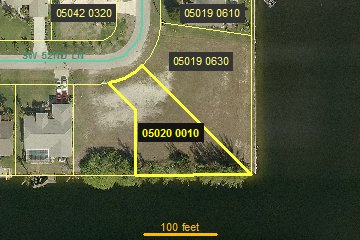 The Lot Examination
The Lot Examination
Before you purchase vacant land you want to make sure that all features promised are really existing, that no other problems are there like buried water pipes running through the building site and that you not unknowingly assume open utility assessments or other debts like impact fees etc.
It does not make a difference whether you buy to build your own home or simply make an investment: a professional examination should always be done - no matter how inexpensive the lot might be! Involve a surveyor to know it all!
In general we are able to verify most of the information by means of the city's own geographical information system (GIS) and its interactive map system (IMS) like:
-
Zoning (can you erect the type of building that you planned for)
-
Name and address of the seller
-
Tax value
-
Open city utility assessments (in Cape Coral)
-
Other open amounts like impact fees
-
Property dimensions and boundaries of the lot according to the online plat book and GIS system

However there are a couple very important things that the surveyor has to verify:
-
The buildability of the lot (buried pipes, burrowing owl or other nests, mangroves and other protected species and plants)
-
The actual square footage of the lot (in case of an error in the online parcel information)
The survey includes not only the total square footage but also the exact boundaries, building lines, easements, the right of way as well as the height of the lot etc. depending on whether you just order a boundary survey or upgrade it to a building survey
Example: Each buildable site in Cape Coral must have 2 lots and consist of at least 10,000 sq ft.
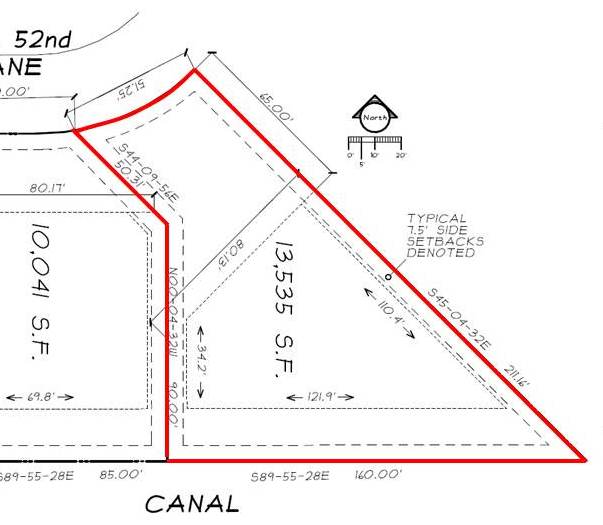
When checking for buildability you do not only want to know whether you can and are allowed to build a structure in a certain size but also whether you can build that structure at all depending on the condition of the parcel.
Example: A parcel, presently consisting of 2 lots, could have been part of another lot earlier in time - 50% of the parcel (=lot #1) could have belonged to a 3 lot site adjacent to the left as well as the other 50% of the parcel (=lot #2) could have belonged to a 3 lot site adjacent to the left. Due to the situation back then the city built the street's drainage system (stormwater pipe) accordingly and routed the pipe down to the canal on the side of the 3 lot property which means it was located in the middle of the two 3-lot sites.
When one lot of this site gets split off later and added to the other adjacent lot of the other 3 lot property a new 2 lot site came into existence. In this specific case the drainage pipe now runs down the middle of this newly created property.
Before you can build a seawall on this site you will have to relocate the pipe to the side of the property which can cost you more than $20,000. If you know this in time you can either renegotiate the price of the property to cover for this issue or you simply cancel the contract within the feasability study period.
This examination can be done easily - therefore make sure you order a survey from a licensed surveyor who can confirm this in writing or can access information at the city's building department.
Also you should consider any improvements on the lot to be checked, i.e. an existing boat dock or seawall. We can consult boat dock and seawall contractors to give us their opinion about the condition.This could go as far as hiring an engineer to get detailled information about the structures.
The Home Inspection
 A professional home inspection should be part of any purchase of an existing home. Properties are often sold "as-is" and without a warranty.
A professional home inspection should be part of any purchase of an existing home. Properties are often sold "as-is" and without a warranty.
While you can purchase a home warranty from a third party it is still necessary to have an expert put the house to the test.
If the report shows serious issues you can cancel the contract within the home inspection period.
In general you should always be prepared for minor defects, after all it is not a new home. With the home inspection though you have a certain safety net and you are not buying the pig in a poke.
- The home inspector will check a variety of things:
- Cosmetic condition
- Foundation and structural elements of the building
- Plumbing, water and sewer
- Electrical systems like A/C, water heater, pool pump, heat pump
- Roof
- Swimming Pool, boat dock and lift
The report
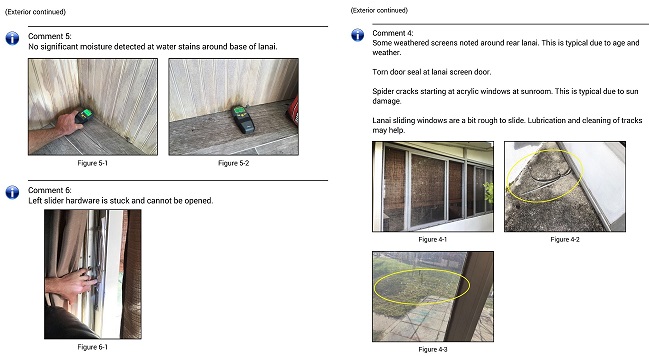
In this case you cannot hold the inspector reliable as he only can give you an assessment at the day of inspection and of course cannot guarantee the future operability of anything.
However, it is a great way to make sure you do not get stuck with big ticket items. He may also make recommendations with regards to replacing/reparing things.
A home inspection can cover several separate inspections and can run between $250 and $1,000 depending on the size of the building and the ordered inspections.
Chinese Drywall Inspection
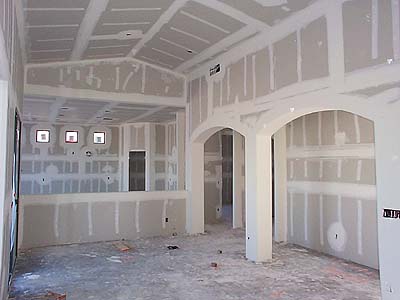 "Chinese Drywall" - for quite some time this was a major term when talking about properties in Florida.
"Chinese Drywall" - for quite some time this was a major term when talking about properties in Florida.
In the years 2003-2006 the permit numbers for new construction increased extremely. In 2005 alone Lee County recorded the unbelievable number of 12,773 new construction and renovation permits. The domestic production could not hold up with the demand for drywall. At that time Chinese companies covered the shortage and manufactured the shorted product.
Unfortunately the quality management failed and batches of defective Chinese Drywall have been exported to the U.S. These batches contain and emit sulphates and other chemical additives which are harmful to your health. Chinese Drywall smells bad, corrodes electrical lines and copper fittings and changes their color as can be seen in the picture. Moreover components like the air condition, washing machine or the water heater are affected as well. People that have unknowingly lived in a Chinese Drywall home complain about headaches and respiratory problems.
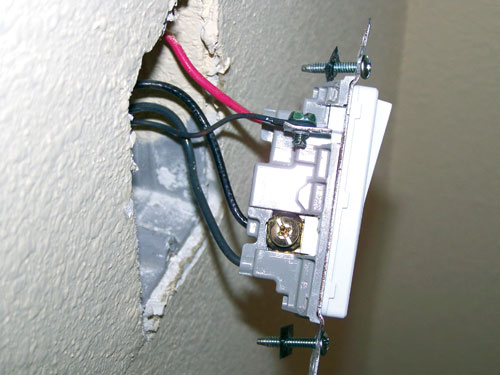
The existence of Chinese Drywall in a home is a major damage. Not only will it cost a lot of money to gut the whole building - the worse part is that as of today there is no such thing as a test certificate that will give you piece of mind after the house has been completely stripped of it.
Nobody can say whether the removal will take care of the problem completely or if in other parts like the roof trusses these vapors continue to harm people. Existing homes can also have some Chinese Drywall, e.g. if they have been renovated during these years. In this case just one or two rooms may be afftected by it.
You should pay attention to the homes of the years 2003-2006, however equally important you should have an eye on it when looking at younger homes. Many real estate agents think that by randomly checking 2 or 3 electrical outlets they can find out whether a house has Chinese Drywall or not.
Keep in mind that a renovation in one part of the house could have brought the defective product in. Also you cannot determine just by the smell whether it is in there or not - often A/C systems that have been turned off for a long time can be responsible for that. Let the home inspector or a third party company check the house thoroughly to prevent costly mistakes down the road. Most inspection companies already have combined this inspection with the regular check of the home.
If there is any evidence of Chinese Drywall we recommened to walk away from it!
Lead-based paint Inspection
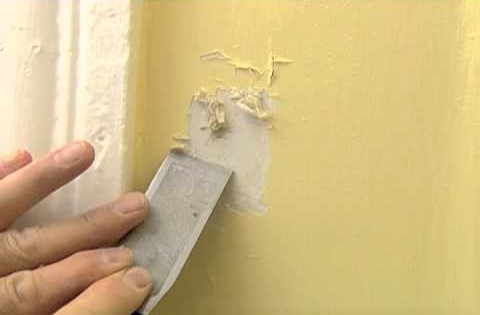 Homes built in 1978 or before may contain lead-based paint. In general this may not a problem, however parts of the paint can chip and drop to the floor. There kids might pick the particles up and eat them - this way lead gets into the digestive system of a person - or you start sanding a wall and all of a sudden the lead based paint is airborne and can be inhaled. Back in the days nobody knew about this, however now it is clear that lead can cause a number of hazardous problems for your health. Children can be struck by growth disturbances and headaches. Adults are also not immune against it. High amounts of lead can be associated with high blood pressure and digestive problems.
Homes built in 1978 or before may contain lead-based paint. In general this may not a problem, however parts of the paint can chip and drop to the floor. There kids might pick the particles up and eat them - this way lead gets into the digestive system of a person - or you start sanding a wall and all of a sudden the lead based paint is airborne and can be inhaled. Back in the days nobody knew about this, however now it is clear that lead can cause a number of hazardous problems for your health. Children can be struck by growth disturbances and headaches. Adults are also not immune against it. High amounts of lead can be associated with high blood pressure and digestive problems.
Before you buy an older home you have to know about the potential risks. You might get rid of the problem just by getting rid of the paint. This, however, should be done by a certified company as during the process of scraping it off dust will develop and inhaling it gets us back to the hazardous consequences. Maybe you can even leave it as it is and just add a sealing layer on top of it.
Therefore homes built 1978 or before should be checked for that. In case the inspection reveals lead-based paint and disposing of it would eat up too much money you can cancel the contract within the home inspection period.
The Termite Inspection in your future home

In almost all instances buildings have a portion of wood in their structure, be it the roof, the wall studs, door frames, baseboards etc. Humidity in combination with heat is a favourable climate for termites. To find out whether a building has these insects, you need to order a termite inspection. An expert in this field will inspect the structure to see whether there is a present damage or one that was caused in the past by these or other wood destroying organisms (WDO's).
Even if there is no present infestation the inspection will reveal if there is any substantial damage in an area that cannot be checked by an unexperienced person. Any damages should be taken care of before the closing. There are companies that do not only do an inspection for a fee but they also guarantee that in case an infestation takes place within a future period after the inspection they will offer a free treatment and take care of the problem.
A termite inspection starts at $75 and the price is depending on the size of the building.





